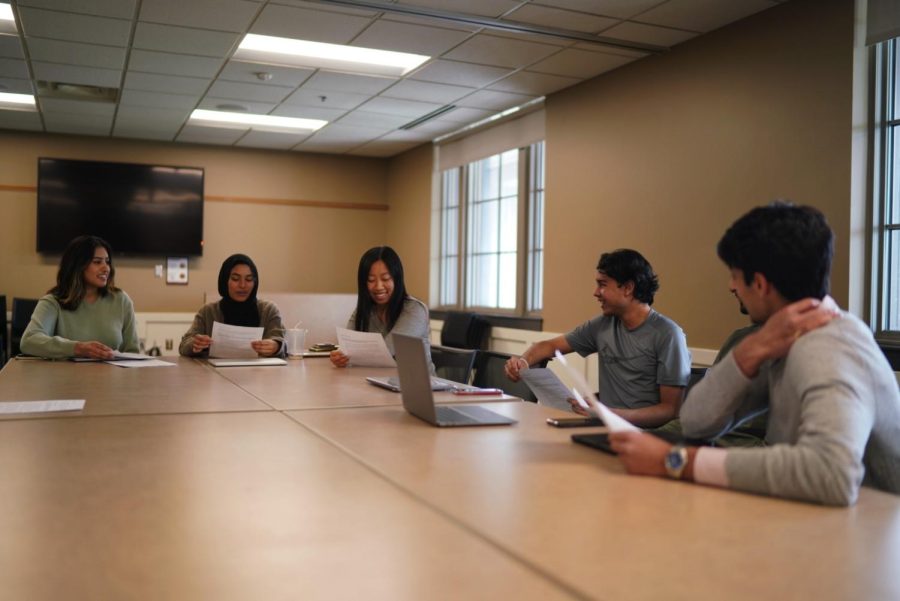“There’s such a need for interfaith dialogue,” said Sophia Park, a fourth-year biology major and the vice president of the University of Minnesota’s Interfaith and Culture Student Association (UMN ICSA). The group was established last March and regularly hosts social events purposed for interreligious education.
Starting this month, UMN ICSA is hosting a Ramadan book club series for participants to read and discuss an internationally-bestselling book titled “Secrets of Divine Love.” As described by UMN ICSA board members, the book provides an “inspiring, uplifting and spiritual take on the beliefs, practices and principles that millions of Muslims share.”
Since Islamic holidays follow the lunar calendar, the holy month of Ramadan does not occur at the same time every year. For the first time in 30 years, this year’s Ramadan overlaps with Lent and Passover, two major holidays in Christianity and Judaism.
In a recent Instagram post, UMN ICSA said the coinciding holidays have provided people with “an amazing time to learn from each other, appreciate our differences and grow in solidarity from our shared values.”
Amal Suri is a Muslim and a third-year biology student who serves as UMN ICSA’s president. She is leading the book club alongside the group’s secretary, Mahnoor Ghumman. About the book, Suri said, “There are a lot of religious people that believe in a God and so it’s applicable to so many different faiths.”
At the first book club meeting, the two leaders facilitated discussions around prompts like the following: “How do you view God? How have your impressions of God changed since childhood? Has the book changed your impression of God?”
Book club members represent a diverse array of religious and contemplative traditions including Islam, Christianity and agnosticism.
Park is a nondenominational Christian and she said she helped found UMN ICSA alongside its other leaders.
“It was sort of born a little bit out of strife,” Park said. “We were seeing a lot of religious intolerance and I think each of us has individually experienced some form of ignorance … We were thinking about what could be a good solution to that and this is what we came up with.”
“I noticed a lot of individual religious groups on campus,” Suri said. “There wasn’t very many interfaith conversations happening and so I thought that it would be good to form an interfaith organization…I think there’s a lot to learn in talking to people that are different than you.”
Park cited the interfaith panel as the UMN ICSA event she is most proud of. At the panel, speakers from the respective Abrahamic religions discussed how faith can help combat racism.
Park said panelists considered how to “rectify the wrongs that have happened in this country surrounding racism with God as the center…and repair some of the harms that have been done.”
Anantanand Rambachan is a professor of religion at St. Olaf College and has been involved in interfaith work for over 25 years. He recently began serving as co-president of Religions for Peace, the largest global interfaith network.
“Peace is a common ideal of all of our religious traditions,” Rambachan said. “We share that commitment that a good human community is a peaceful and just community. We can’t speak of peace without speaking also of justice.”
Referring to how religion has been used to legitimize injustice and oppression, Rambachan said, “The historical legacy of religion is a mixed one…Religion should be a resource for human unity and for human flourishing. The God of compassion is a great inspiration for transforming social structures into infrastructures of justice, infrastructures of compassion, infrastructures of care.”
UMN ICSA and similar groups reflect longstanding historical trends related to interfaith relations.
“The religious landscape of the U.S. really changed dramatically in the 1960s,” Rambachan said. The Immigration Act of 1965 eliminated nationality-based immigration quotas, which dramatically increased religious diversity in America.
“This is where we’ve got the transformation,” Rambachan said. “The demographic changed which meant that people were encountering each other, working side-by-side with each other. People started living their lives in an interfaith context.”
Jeanne Kilde serves as the director of the University’s Religious Studies program. Kilde cited the ecumenical movement as a major development in American interfaith work. The movement consisted of Protestants, Catholics and Jews who worked together to address shared social questions in communities.
Other religious groups like Muslims and Native American religious practitioners were not widely included in these interfaith collaborations until the 1990s. Then, Kilde said, “We start to see the kind of interfaith organizations that we’re familiar with now.”
Rambachan called groups like UMN ICSA “expressions of religious diversity growing.”
“This is what, for me, changes attitudes,” Rambachan said. “Sharing meals together, going to each other’s homes, talking about hopes and fears and dreams, discovering what I call common humanity.”
Suri shared similar sentiments. “There are a lot of tensions between people from the different Abrahamic faiths,” she said. “We are actually similar in a lot of our beliefs. You can actually come together and have these discussions and relate to each other and talk about our similarities and bond.”
Reflecting on the power of interfaith work, Suri said, “I think that there are some people that have come to interfaith events with preconceived judgments about people from different faiths. I definitely think that leaving conversations and learning about the other person, learning about the ways that you’re actually so similar in your belief in God … they would leave that conversation having a newfound respect for the other.”



















